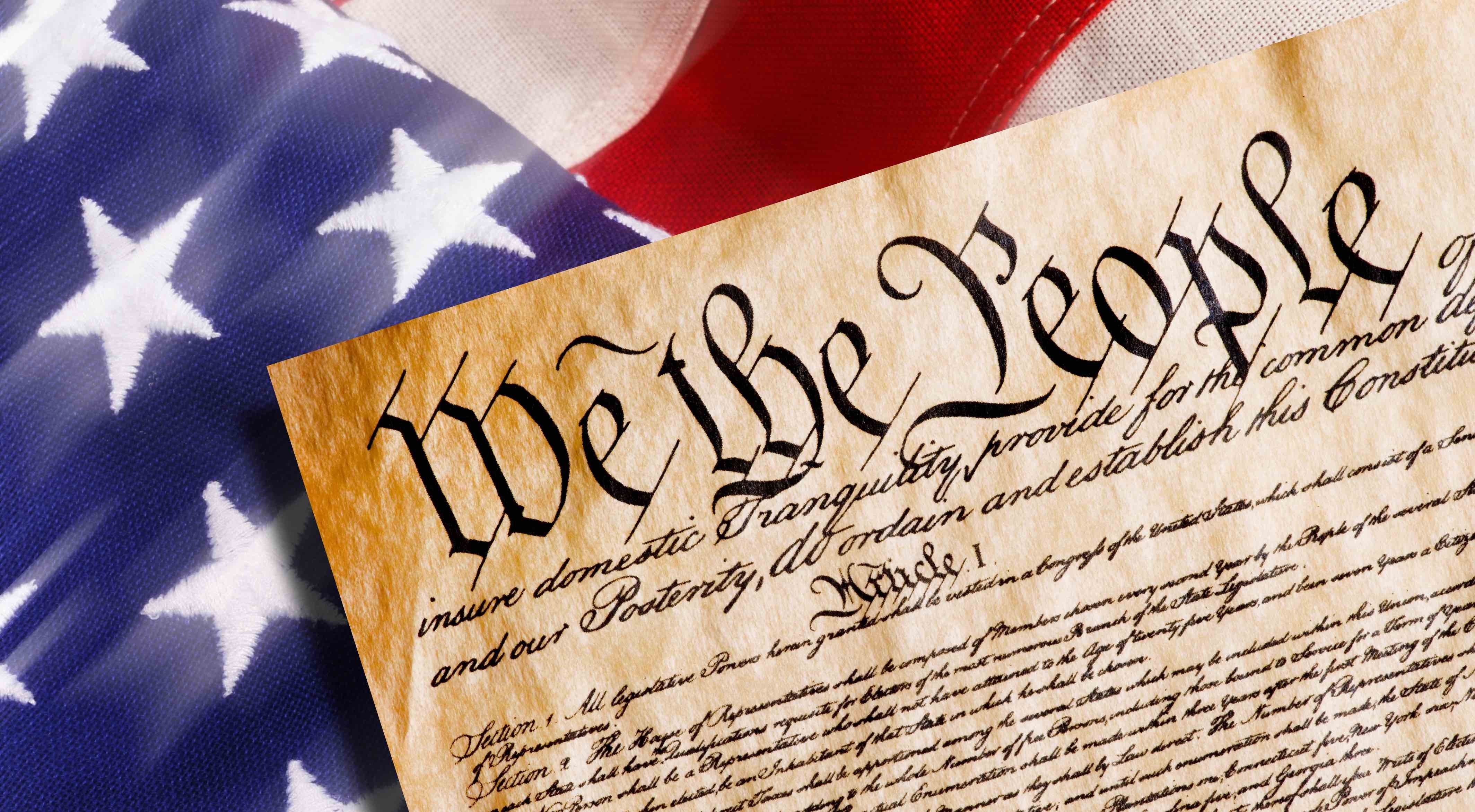There's more to the U.S. Constitution than the Bill of Rights—there's the original document plus a total of 27 additional amendments. Here are interesting facts and figures you may not know about this important document that is the cornerstone of the American government.
1. The Bill of Rights
In 1789, James Madison, the “Father of the Constitution,” who at the time was a U.S. Congressional Representative from Virginia and would go on to serve as the fourth President of the United States, proposed 19 amendments meant to answer the objections that had already been raised by the States regarding the Constitution, which had been ratified only two years earlier. The House of Representatives approved 17 of the amendments, of which the Senate approved 12. Those 12 amendments were then sent to the state legislatures for approval. Only ten amendments were ultimately approved by three-fourths of the state legislatures; Virginia was the tenth out of the existing 14 states to do so, giving them the final go-ahead on December 15, 1791. Those ten bills became known at The Bill of Rights. Of the two proposed amendments that didn’t get ratified in 1791, one finally did in 1992.
2. Popular vote vs. Electoral College When the 39 men signed the Constitution, they signed into law one of the most contentious processes in the world: an election mechanism still being debated today. James Wilson, who represented Pennsylvania at the Constitutional Convention in 1787, originally proposed that the President be chosen by popular vote. But according to the National Archives and Records Administration, “the Founding Fathers established the Electoral College in the Constitution as a compromise between election of the President by a vote in Congress and election of the President by a popular vote of qualified citizens.” It’s been an often debated idea ever since. Per ConstitutionFacts.com, there have been 500 proposed amendments to change the Electoral College process, but this “indirect” system of electing the president is, of course, still intact—as we all were reminded in November 2016 when the winner of the popular vote, Democratic candidate Hillary Clinton, lost the election. Understanding the Electoral College is one of the confusing questions many are too embarrassed to ask about the American government.
When the 39 men signed the Constitution, they signed into law one of the most contentious processes in the world: an election mechanism still being debated today. James Wilson, who represented Pennsylvania at the Constitutional Convention in 1787, originally proposed that the President be chosen by popular vote. But according to the National Archives and Records Administration, “the Founding Fathers established the Electoral College in the Constitution as a compromise between election of the President by a vote in Congress and election of the President by a popular vote of qualified citizens.” It’s been an often debated idea ever since. Per ConstitutionFacts.com, there have been 500 proposed amendments to change the Electoral College process, but this “indirect” system of electing the president is, of course, still intact—as we all were reminded in November 2016 when the winner of the popular vote, Democratic candidate Hillary Clinton, lost the election. Understanding the Electoral College is one of the confusing questions many are too embarrassed to ask about the American government.
3. The Constitution didn’t form a democracy

Most Americans consider the United States a democracy, but the framers of the Constitution were not, in fact, trying to create a democracy. Interestingly, the word “democracy” doesn’t even appear in the U.S. Constitution—not once. In fact, according to the National Archives, when Benjamin Franklin was asked if the delegates to the Constitutional Convention had created a monarchy or a republic, he replied, “A republic, if you can keep it.” The difference is that “in a democracy, the majority rules, but a republic has a government by the people with checks and balances and a constitution for all to adhere to,” explains the National Archives. This is why hate speech is protected under the Constitution.
4. We owe the Constitution for our Thanksgiving naps

The first national “Thanksgiving Day,” to be celebrated on November 26, 1789, was established by President George Washington as a way of “‘giving thanks’ for the Constitution,” according to the National Constitution Center in Philadelphia. So have an extra slice of cranberry sauce with your turkey leg, and before you nod off for a nap in front of the TV during an NFL game, give a nod of thanks to our first president. Of course, the holiday had been celebrated more than a century before by the Pilgrims; the idea that the original celebration was a religious holiday is just one of many common myths about Thanksgiving.
5. Much more than a heated debate

It was a hot and humid summer of 1787 in Philadelphia, and yet to ensure secrecy during the meetings, the windows of Independence Hall were kept shut during the Constitutional Convention, according to The Gilder Lehrman Institute of American History. When you add in the fact that thick wool was the unfortunate fashion trend of the day, you can imagine the sweat and the smell coming from our Founding Fathers while they hammered out the laws that still govern our land and provide heated debate today. It can still be sticky hot in summertime, but Philadelphia will always be one of the 16 best American cities for history buffs.
6. Our first president didn’t want to attend the Convention

The Constitutional Convention lasted nearly four hot months, from late May to mid-September 1787, and yet the delegates nearly didn’t get to hear from our eventual first president. After the war and helping to gain independence from England, it had been Washington’s goal to return to life as a country squire during his retirement at Mount Vernon. Amazingly, according to the Fred W. Smith National Library for the Study of George Washington at Mount Vernon, Washington “had to be convinced even to attend the Convention…James Madison and General Henry Knox were eventually able to persuade Washington to make the trip to Philadelphia for the proceedings.” Here are more amazing facts you never knew about America.
7. His Highness the President of the United States of America

Believe it or not, “His Highness the President of the United States of America and Protector of Their Liberties” was one of the proposed titles for the position that eventually became known simply as “The President of the United States.” How does your knowledge stack up? Take the U.S. Citizenship test that only 40 percent of Americans can actually pass!
8. Rhode Island’s boycott

The small seaside state boycotted the 1787 Constitutional Convention, because of its distrust of a powerful federal government, according to History.com. In 1790, Rhode Island would be the last of the original 13 states to ratify the Constitution and only did so on the condition that a Bill of Rights be included. Its neighboring state, Connecticut, is nicknamed “the Constitution State”—but not because it was the first to sign the U.S. Constitution. It’s because the Fundamental Orders of 1638/1639, a document that some consider “the first written constitution,” were written there. Find out more about Connecticut’s nickname, as well as 23 other U.S. state facts everyone gets wrong.
9. One man physically wrote the Constitution

John Shallus, a clerk for the Pennsylvania General Assembly and the gentleman who physically wrote the Constitution down on four large sheets of vellum parchment paper, was paid for his services. Shallus was given a tight two-day deadline and was paid $30 (roughly $800 in today’s money) for his scribe services, according to History.com. It’s possible that the quick turnaround led to some of the grammatical and spelling errors in the final document.
10. Only 39 signatures

Considering it was debated for months and was destined to become a legendary legal document, you would think there would be more than 39 signatures on it, but the U.S. Constitution was signed by only 39 men. In fact, only 70 delegates were in Philadelphia in 1787 for the Constitutional Convention and only 55 of those regularly attended the six-days-a-week, 10-A.M.-to-3-P.M. sessions.
Source: Readers Digest

